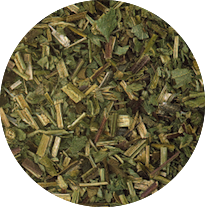Botanical Name: Agrimonia eupatoria
Common names: Agrimony
Family: Rosaceae
Plant Parts used: aerials
Description and Habitat
An erect, downy, leafy perennial that grows to about 80cm tall. The leaves are paired, with a green upper and silvery green underneath area; small five petalled flowers grow on terminal spikes (Summer through Autumn); fruit are about 6mm across, obconical, deeply grooved, hairy, with spreading hooked bristles above. Agrimony is a native European herb typically found in marshes, wet meadows, and open areas. Can be grown in gardens in New Zealand and Australia. Usually grown from seed, and will self-sow; drought and frost resistant. It is usually harvested during summer when in flower.
History, Folklore & Ritual Usage
This species was associated with Mithridates Eupator, King of Pontus in Northern Turkey (d. 63BC), who was said to have an impressive knowledge of plant lore. Used to treat snake bites, warts, gun shot wounds, sprains, bruises, internal haemorrhage, coughs, relaxed bowels, jaundice, liver complaints, skin eruptions, scrofulous sores, fevers, gout, colic, drawing splinters, strengthening joints, sores, ulcers, cancers, all conditions with excess heat or cold! Used in Pagan and Wiccan rituals for protection, sleep, soothing a restless soul, and to break hexes (purported to return the hex back to the original sender). Considered a masculine herb, this is often part of protection spell recipes, and also to aid the expulsion of negative energetic forces.
Main Constituents
- tannins (up to 8%)
- coumarins
- flavonoids (luteolin, apigenin, quercetin)
- volatile oil
- polysaccharides (about 20%)
- bitter principle
Actions
- astringent
- anti-inflammatory
- diuretic
- tonic
- cholagogue
- vulnerary
Indications
1. GASTROINTESTINAL TRACT
- Can improve digestive secretion, assimilation of nutrients, heal and soothe digestive tract
- Digestive tonic
- Diarrhoea in children
- Chronic appendicitis
- Mucous colitis
- Chronic gastritis
- Chronic cholecystopathies with gastric sub-acidity
2. URINARY TRACT
- Urinary incontinence
- Cystitis
3. EXTERNAL USE
- Chronic nasopharyngeal catarrh
- Sore throat (gargle & spit)
- Cutaneous porphyria
Preparation & Dosage
- Best taken three times daily
- Infusion: 2-4g in a cup (250ml) of near-boiling water
- Tincture (1:5): 1-4ml
Cautions & Contradictions
- None listed
Click here to purchase certified organic Agrimony
~~~

Megan Sheppard is an aficionado of all things plant-based, particularly if it involves herbs and tastes delicious! She works as a Herbalist specialising in nutrition, and works freelance as a natural health author and advisor. Megan’s herbalicious creations can be found at Wildflower Botanicals, a garden of organic and ethically sourced teas, chocolate, and other delights!

